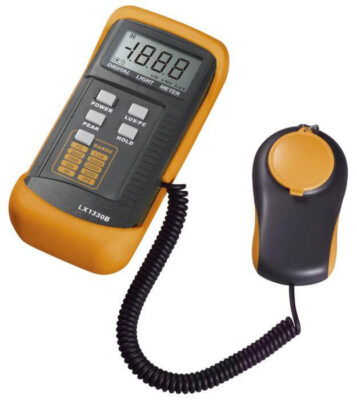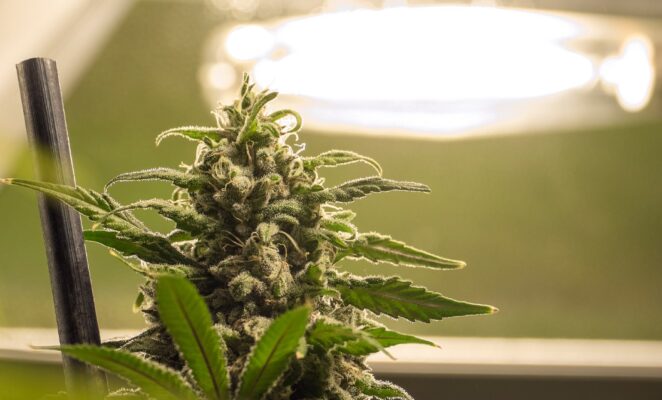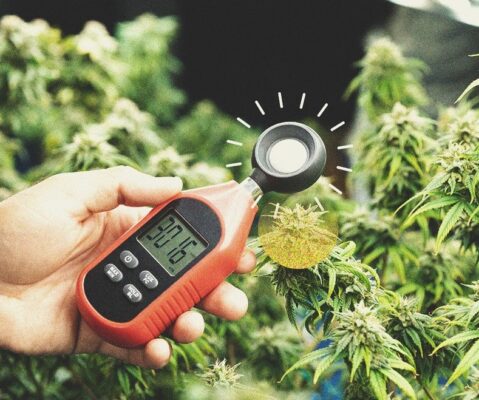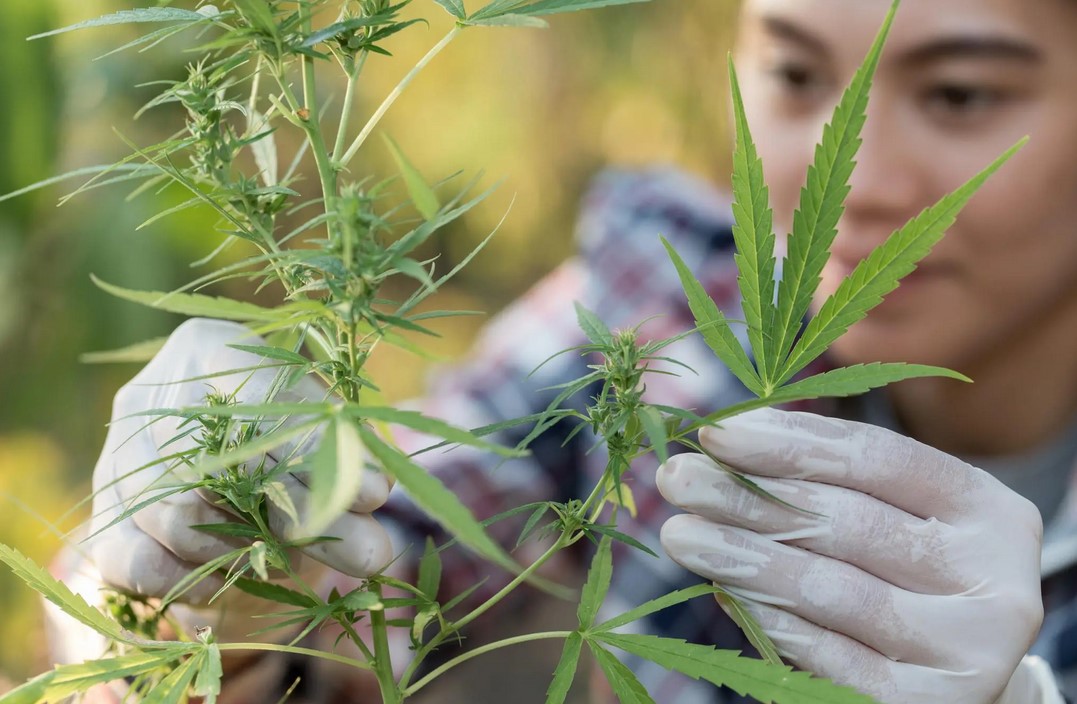Uncategorized
How to Use a Lux Meter to Increase Cannabis Yields
When it comes to maximizing your yields when cultivating cannabis, you’ll need a lot of light. We’ll teach you how to get the most out of the amount of light your plants receive for healthy development and greater production in this article. All you need is a low-cost lux meter.
If your cannabis plants do not get enough light, especially during the flowering phase when they develop buds, then your yield will be lower. By using a cheap lux meter, you can make sure that your plants are getting optimal lighting conditions. Learn how to increase your yield by taking advantage of a lux meter!
WHAT IS A LUX METER?
 To assess how much light their plants are getting, most horticulturalists don’t use a lux meter. Instead, they use a PAR meter, which measures “photosynthetically active radiation,” or the amount of light that is available to plants for photosynthesis. Although this technique of measuring light is more precise, it has a disadvantage: PAR meters are pricey and may be quite costly.
To assess how much light their plants are getting, most horticulturalists don’t use a lux meter. Instead, they use a PAR meter, which measures “photosynthetically active radiation,” or the amount of light that is available to plants for photosynthesis. Although this technique of measuring light is more precise, it has a disadvantage: PAR meters are pricey and may be quite costly.
You can also use a lux meter to measure the light in your grow room instead of a PAR meter. The unit for “lumen per square metre” is known as lux, which refers to the illumination from visible light in an area. Despite the fact that there is a distinction between “visible light” and the spectrum of light that plants utilize for growth, a lux meter will suffice for our needs. The major benefit of using a luxmeter is that it is inexpensive. You may buy one for as little as €20.
BENEFITS OF A LUX METER WHEN GROWING CANNABIS
• It helps to maximise yield
The number one advantage of using a lux meter is that it can help you improve your yield. By finding the areas in your grow room receiving the most light, you can better position your plants for healthier growth and more buds. Additionally, measuring distance between grow lights and plants with a lux meter lets you make adjustments as needed to ensure each plant is getting just the right amount of light exposure―not too much or too little. And if maximizing yield potential is what you’re after, then a lux meter will also let you know when it’s time to upgrade to a stronger grow light.
• It helps prevent plant issues
Anlux meter is your go-to device to ensure proper lighting for cannabis plants. With the right amount of light, hemp will grow healthy and strong. However, too much light can causing issues such as heat stress or plant bleaching.
• It helps you know when you need to replace your HID lights
Despite the fact that LEDs are increasingly being used in HID grow lights, they are still prevalent in many grow rooms. They’re cheap and widely accessible. HIDs have a limited lifespan when compared to other types of grow lights. The bulbs will eventually get dimmer, and you’ll need to replace them now and again. You may use a lux meter to determine whether your HID lights are still capable of performing well; or it’s time to replace them.

HOW MUCH LIGHT DO YOUR CANNABIS PLANTS NEED?
The quantity of light a plant needs varies depending on its growth phase. The highest amount of light is required during the blooming stage, since buds develop and mature before harvest. In the vegetative period, when your plants are still developing and solidifying their structure, they will require light, but far less than in the flowering phase. The amount of light your plants need depends on their age and type. Seedlings, clones, and young plants will require the least amount of light. The strain you’re growing also affects how much light it needs to thrive – some strains do well with less light while others need more.
Depending on the growing stage of your plants, they will need a certain amount of light, as seen in this guideline:
• 5,000–7,000 lux: Clones and seedlings
• 15,000–50,000 lux: Vegetative growth
• 45,000–65,000 lux: Flowering stage
• 75,000 lux: Maximum recommend light
According to the most skilled cannabis growers, providing cannabis plants with too much light is a waste of time. There will be less returns at some point, which is around 80,000 lux. This means that attempting to increase light even more will result in minimal benefits and is therefore not worth the effort. Cannabis plants will begin to show signs of light stress or bleaching at 80,000 lux. To prevent these issues, keep your lighting level below 75,000 lux.
HOW TO MEASURE HOW MUCH LIGHT YOUR PLANTS ARE GETTING
When it comes to measuring light in your growing space, the first thing you need to know is that you’re measuring at approximately the level of your plants’ canopy. This will provide you with the most accurate information concerning how much light your plants are truly getting.
It’s also important to note that light is typically unevenly dispersed in a grow room. There will most likely be more light close to your light fixture and less at the outer edges. If you take several measurements in various locations, you may get an idea of how bright your grow room is. If you measure these areas, it can help you identify blind spots or well-lit regions within your grow room. These areas aren’t always obvious unless they’re measured. Following that, make a list of everything you’ve discovered so far.
REARRANGE YOUR PLANTS FOR BETTER YIELDS
After you figure out how light is hitting your grow operation, you can move your plants to take advantage of that. For example, flowering plants produce more if they’re in brighter areas, so put them where the light is strongest. If you have any cannabis plants that are just vegging (in vegetative growth), put them where the light is weaker.

WHEN YOU CAN’T USE A LUX METER
The Lux meter is used to measure “visible” light, which in simple terms refers to sources with a white or whitish light. This includes the sunlight and HID and CFL lights, as well as COB LEDs that emit a white glow. Blue and red LEDs are used in some older-generation LED grow lights, resulting in a purple glow. Unfortunately, you can’t utilize a lux meter for these sorts of purple grow lights. A PAR meter or checking the manufacturer’s information is required to figure out how much light your purple grow light emits. A lux meter should work just fine for most other sorts of lights as long as they give off a white or whitish glow.
How Do You Measure Light Intensity?
Use a quantum-sensor light meter to measure light intensity.
A light-sensitive digital sensor is used to evaluate photosynthetic photon flux density (PPFD). Rather of using visible light as seen by humans, this measures the plant’s actual light intensity.
meters that measure lumens or footcandles will significantly understate PPFD intensity. This is because they measure the light intensity based on how humans perceive visible light, as opposed to full-spectrum quantum-sensor light meters.
Take a few intensity readings at canopy level and average them to determine the average PPFD in your propagation region with a quantum sensor.


